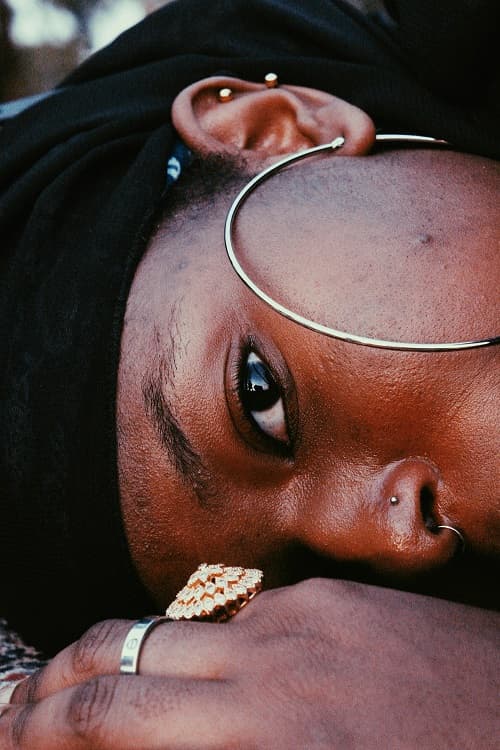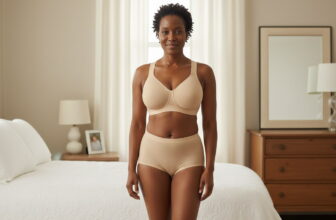The art of ear piercing carries a heritage that weaves through the tapestry of human history, shaping identities and reflecting the ever-changing tides of fashion and personal expression. It has found varied significance in countless cultures as a practice and symbol of beauty, status, religious beliefs, and personal journey.
With contemporary society’s emphasis on artistic liberty and safe and hygienic ear-piercing solutions, knowledge of its storied past and evolving present is pivotal for anyone contemplating this transformative adornment.
As we embrace ear piercing in the modern age, it remains critical to respect the ancient roots while appreciating the advancements in safety and personal well-being.
By exploring the compelling lineage of this practice, we unlock a deeper understanding and a more conscious approach to embracing ear piercing today, allowing it to continue as a poignant form of self-expression that respects history and health.
The Process of Ear Piercing
The act of piercing is a ritual with a spectrum of meanings but a universal requirement for safety and precision. Prospective piercees should seek trained professionals who operate within strict hygiene standards, using sterilized equipment to minimize risk.
The intricate process starts with carefully selecting the piercing location, followed by a meticulous procedure with a fine needle or a specialized piercing gun. It concludes with the placement of quality starter jewelry, often left in until the healing process is complete.
 Photo: Unsplash / Mohammed Taha
Photo: Unsplash / Mohammed Taha Emphasizing the importance of aftercare in the piercing healing journey is crucial. Detailed aftercare instructions must be followed precisely. It includes cleaning the piercing with a saline solution and refraining from touching or rotating the jewelry.
Proper aftercare is vital to a quick and smooth healing process, lasting from a few weeks to several months, depending on the individual and the area pierced.
Choosing the Right Jewelry
In a world brimming with jewelry options, making the right choice for your ear piercings is crucial. New piercings require biocompatible materials, such as surgical steel, titanium, or gold. Quality jewelry not only prevents adverse reactions but also enhances the overall experience.
The selection can diversify as healing progresses, enabling individual styles to shine through from various designs, sizes, and materials that reflect distinct personalities and preferences.
Understanding Risks and Complications
While ear piercing is generally safe, potential risks should be acknowledged. Among these concerns is the risk of an allergic reaction to certain metals. This phenomenon can significantly impact young children, as outlined in the study regarding the increased risk of nickel allergies when ear piercing is conducted early.
Immediate attention is required for signs of infection, such as redness, swelling, or discharge, as they could lead to complications like keloid formation or irreversible damage.
The Psychology Behind Ear Piercing
On a psychological level, ear piercing can embody many meanings and impact the individual’s psyche and perception. It can be an act of self-assertion, a marker of a life milestone, or simply a means to enhance one’s aesthetic allure.
Furthermore, societal perceptions of piercings constantly evolve, with the modern workplace and social settings increasingly open to various forms of body art.
Cultural Variations in Ear Piercing
Diving into the cultural depths of ear piercing reveals a wealth of traditions and beliefs. In many cultures, piercing holds sacred significance, aligned with spiritual beliefs or marking moments of transition.
These practices are often merged with contemporary methods, creating a fusion where time-honored significance is preserved even as modern aesthetics are embraced.
Technology and Innovation in Piercing Techniques
The piercing industry has seen transformative changes with technological evolution. Enhanced precision and safety are now the norm, resulting from advanced piercing equipment that promises a seamless experience with reduced discomfort.
Continuous innovations ensure that ear piercing is an aspect of beauty and a beneficiary of medical advances and artistic creativity.
Tattoos vs. Piercings: A Comparison of Body Art Practices
In body art, tattoos and piercings are siblings with distinct features. Tattoos are permanent fixtures that tell a story etched in ink, demanding commitment and resilience during application.
 Photo: Pexels / Tomaz Barcellos
Photo: Pexels / Tomaz Barcellos Piercings offer a comparatively transient experience, with the option to change or remove the jewelry at will. Enthusiasts of body art often enjoy both, letting their skin narrate a unique story of artistry and individuality.
Age Considerations in Ear Piercing
The appropriate age for ear piercing is multifaceted and influenced by societal norms, parental discretion, and legal aspects. Parents pondering this decision for their children should weigh the benefits against the child’s readiness to maintain and care for the piercing. It’s essential to ensure the experience is comfortable and safe, imbuing it with positive memories, irrespective of age
Embracing Individuality Through Ear Piercing
A proclamation of style, a nod to heritage, and an echo of personal choice, ear piercing transcends being merely a trend. It is a celebration of diversity and identity, embedded in the rich fabric of history and progressing with the pace of innovation.
As various styles and practices continue to emerge, the trend’s popularity endures, making statements through adorned ears, one piercing at a time, as indicated in the insights about ear piercing trends in 2022.
Photo: Pexels / Tomaz Barcellos






